Jan 15, 1525- Dissenters in Zürich baptize each other. Anabaptist movement is born (Anabaptist, roughly translated from Greek, means "baptized again"). For Anabaptists, infant baptism is a meaningless practice because it is impossible for a child to make a meaningful commitment to Christianity. Adult baptism represents a true commitment to Christian discipleship. This sect also emphasizes the importance of eliminating unnecessary religious hierarchies and believes that the end of the world could be imminent.
1527- Anabaptist "brethren" meet at Schleitheim on Swiss-German border and agree on foundational points of the movement.
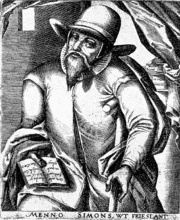
1534- Some radical northern Anabaptists (Melchiorites) capture the German city of Münster and are crushed by mixed Catholic and Protestant armies after 18 months in power. This is commonly known as the Münster Rebellion and represents a historical case of Anabaptists using military force. Persecution of all northern Anabaptist sects, even nonviolent ones, increases after this incident.
1536- Former Dutch Catholic Priest Menno Simmons (1496-1561) joins a northern Anabaptist sect. Anabaptists are eventually known as "Mennists" or "Mennonites."
1564- The Ausbund, an Anabaptist hymnbook, is first printed. This book is still used in Amish religious services today.
1632- Dordrecht Confession of Faith establishes unity among Mennonite leaders and reinforces basic ideas such as adult baptism, shunning (Meidung), a brotherhood church, and the withdrawal from civic life.
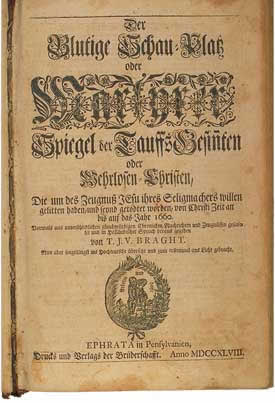
1660- The Bloody Theater or Martyr's Mirror is first published. This volume recounts the persecution and martyrdom of early Anabaptists and is generally considered the second most highly regarded book by the Amish after the Bible.
1670- Due to their reputation as excellent farmers and peaceful citizens, large groups of Mennonites are invited by local nobles to inhabit the Palatinate and Alsace regions.
1680s- Mennonites begin to settle in Pennsylvania, with most of them living in Germantown.
1693-1694- Jacob Amman (from Alsace) and others begin to travel the countryside emphasizing the value of shunning, the importance of separation from the "worldly," and the adoption of strict codes of dress and grooming. Reist-Amman controversy ensues and eventually the Amish and Mennonites become separate groups.
1711- Bernese (Switzerland) Government wants to deport the local Amish and Mennonites to North America. The Netherlands intervenes and offers asylum to these groups. A mostly Amish population settles in the Netherlands and, within several decades, the group assimilates into Dutch culture.
1736- Detweiler and Sieber families arrive in North America, start Amish settlements in Northkill Creek and Irish Creek areas of Berks County.
1737- Charming Nancy sets sail for North America with 21 Amish families aboard. The Amish migration begins in earnest.
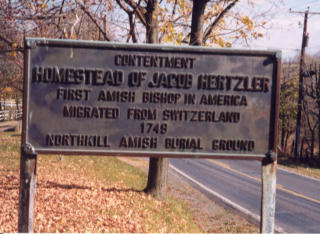
1749-Jacob Hertzler (1703-1786), the first well-known Amish Bishop in North America, arrives and settles in Northkill Creek.
1767-Amish families settle in Somerset County.
1791- Amish families settle in Mifflin County.
1815- Second wave of Amish immigration begins. About 3,000 adults move to North America, with most ending up in Ohio, Illinois, Indiana, Ontario, New York, and Iowa. While most of the new immigrants travel through settlements in Pennsylvania, only a few stay.
1850s- Churches in Wayne County and Holmes County, Ohio and Mifflin County, Pennsylvania debate the appropriateness of stream baptism. All over the U.S., Amish churches are faced with controversies over appropriate dress, the degree of separation from civic society, the use of meetinghouses for church services, and the appropriate use of technologies such as lightning rods and photography.
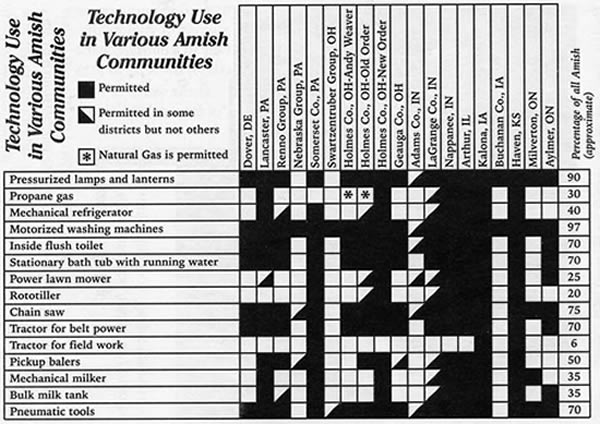
1862- First all-church Amish ministers' conference (Diener-Versammlung) is held in Wayne County, Ohio. Most issues and controversies remain unresolved and conservative factions are angered by a lack of representation.
1865- Feeling unsatisfied with the direction of the annual minister's conferences, the conservative factions walk out and form the Old Order Amish.
1865-1866- Formation of the "Egly Amish" under Bishop Henry Egly (1824-1890) from Adams County, Indiana. Egly emphasizes personal experiences of God and His grace. This group incorporates many aspects of popular evangelical movement at the time.
1871-1878- Formation of the "Stuckey Amish" under Bishop Joseph Stuckey (1826-1902) from McLean County, Illinois. The Stuckey Amish allow excommunicated members of other communities to join, are more relaxed in dress, advocate integration with the outside society, and espouse universalisméthe belief that God would save all of humanity regardless of religious affiliation.
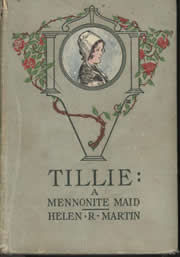
1904-1905- American author Helen Reimensnyder Martin publishes Tillie, a Mennonite Maid and Sabina: A Story of the Amish, novels that generally portray the Amish negatively and epitomize a growing fascination with the Amish in American society.
1909-1910- 35 families withdraw from Lancaster County Old Order Amish to form "Peachy Amish" (later becomes "Beachy") sect.
1917-1927- Various regional conferences of Amish Mennonites decide to join the Mennonite conferences. Effectively Amish Mennonites cease to exist as a separate group.
1921- Ohio's Bing Act mandates school attendance through age 18. This law meets with resistance from the Old Order Amish, who don't believe in schooling after the eighth grade. This precipitates a schooling controversy that last several decades.
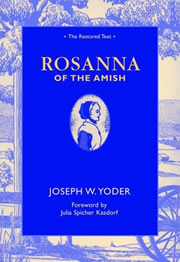
Mid 1930's- The consolidation of the Pennsylvania public school system begins. Local one-room schoolhouses are shut down and incorporated in larger regional school systems. This marks the beginning of the Amish parochial school movement in Pennsylvania.
1940- Joseph W. Yoder publishes Rosanna of the Amish, a retelling of his mother's life story. This was meant to rectify negative stereotypes about the Amish.
1972- After several years of intense controversy, the Supreme Court rules that Amish parochial schools will be permitted and that schooling beyond the eighth grade level violates Amish religious freedom. This landmark decision, Wisconsin v Yoder, marks the beginning of a period of increased sympathy towards the Amish.
